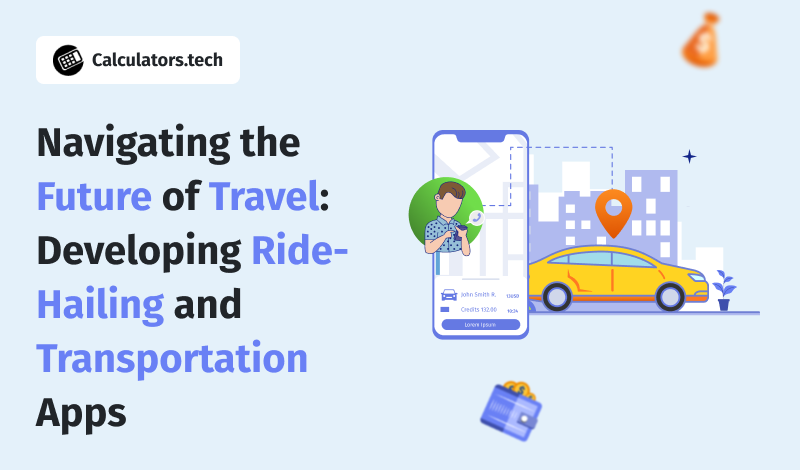In today's fast-paced world, the demand for convenient and efficient transportation solutions has never been higher. This surge in demand has led to a boom in travel app development, with entrepreneurs and businesses rushing to create the next big thing in ride-hailing and transportation. From Uber clones to Rapido clones and inDrive clones, the market is teeming with innovative solutions. Let's dive into the world of travel app development and explore what it takes to create a successful transportation platform.
The Rise of Ride-Hailing Apps
The success of platforms like Uber, Lyft, and Grab has inspired countless developers to create their own versions, commonly known as "Uber Clone." These apps aim to replicate the core functionality of connecting riders with drivers, while often adding unique features or focusing on specific market niches.
Key Features of an Uber Clone:
- User-friendly interface for both riders and drivers
- Real-time GPS tracking
- Fare estimation and dynamic pricing
- Multiple payment options
- Rating and review system
- In-app messaging and call features
Two-Wheeler Revolution: Rapido Clone Apps
While Uber-like services focus primarily on cars, there's a growing market for two-wheeler ride-hailing, especially in congested urban areas. This is where Rapido clone apps come into play. Rapido, an Indian bike taxi service, has inspired many developers to create similar platforms.
Essential Features of a Rapido Clone:
- Quick ride booking for shorter distances
- Helmet detection for safety compliance
- Cost-effective pricing for budget-conscious users
- Option for shared rides
- Integration with public transport information
The inDrive Approach: Negotiable Fare Model
inDrive has introduced a unique concept in the ride-hailing world: allowing passengers to suggest their own fare. This innovative approach has led to the development of inDrive clone app, which incorporates this negotiable fare model.
Key Aspects of an inDrive Clone:
- Fare negotiation system
- Transparent driver-passenger matching
- No surge pricing
- Focus on mid to long-distance trips
- Community-driven approach
Challenges in Travel App Development
Creating a successful transportation app involves overcoming several challenges:
- Regulatory Compliance: Navigating the complex and often changing regulations in different regions.
- User Acquisition: Building a critical mass of both drivers and riders. One way startups are accelerating driver onboarding is by partnering with vehicle providers that offer rental options for Uber drivers, helping new drivers hit the road without needing upfront vehicle ownership or complicated licensing processes.
- Safety and Trust: Implementing robust verification and safety features.
- Technical Infrastructure: Developing a scalable and reliable platform.
- Competition: Standing out in a crowded market.
Steps to Develop a Successful Travel App
- Market Research: Understand your target audience and local transportation needs.
- Choose Your Niche: Decide whether you're creating an Uber clone, Rapido clone, inDrive clone, or a hybrid solution.
- Feature Planning: Outline must-have features and unique remote selling points.
- Technology Stack: Select appropriate technologies for backend, frontend, and mobile app development.
- UI/UX Design: UX UI design services to create an intuitive and appealing interface.
- Development and Testing: Build your app with a focus on performance and user experience.
- Launch and Marketing: Plan a strategic launch and ongoing marketing efforts.Ensure your app logo is prominently featured across all promotional materials to build brand recognition.
- Continuous Improvement: Gather user feedback and regularly update your app.
The Future of Travel App Development
As technology evolves, we can expect to see travel apps incorporating:
- AI and machine learning for improved matching and routing
- Integration with other modes of transport for seamless multi-modal journeys
- Augmented reality for easier driver-rider meetups
- Blockchain for enhanced security and transparency
- Integration with smart city infrastructure
Conclusion
The world of travel app development is dynamic and full of opportunities. Whether you're looking to create an Uber clone, a Rapido clone, an inDrive clone, or something entirely new, the key to success lies in understanding your market, focusing on user experience, and continuously innovating. As urban populations grow and transportation needs evolve, there will always be room for smart, efficient, and user-friendly travel solutions.
Remember, the most successful apps are those that not only meet current needs but anticipate future trends in transportation and technology. By staying ahead of the curve and focusing on creating value for users, your travel app can carve out its own niche in this exciting and rapidly evolving market.
